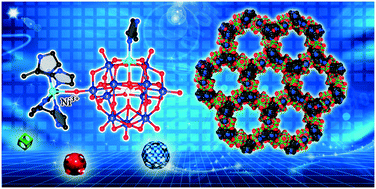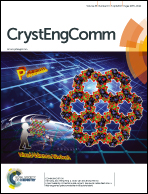A noncovalently connected metal–organic framework assembled from a Ni(iii)-supported polyoxometalate–imidazolate hybrid†
Abstract
The first mixed-valence nickel-supported polyoxometalate-based metal–organic framework, (H2mim)[NiIII(Hmim)4][SiW11NiIIO37(OH)2(Hmim)]·3H2O (1) (Hmim = 2-methylimidazole), has been synthesized using a steam-assisted conversion method, and is constructed from noncovalent interactions (hydrogen bonds and π⋯π stacking interactions). 1 has a repeating honeycomb-shaped internal structure with one-dimensional channels along the direction of the c axis, where the diameter of the aperture is as large as 18.83 Å. Furthermore, the stability and the optical band gaps are investigated.



 Please wait while we load your content...
Please wait while we load your content...